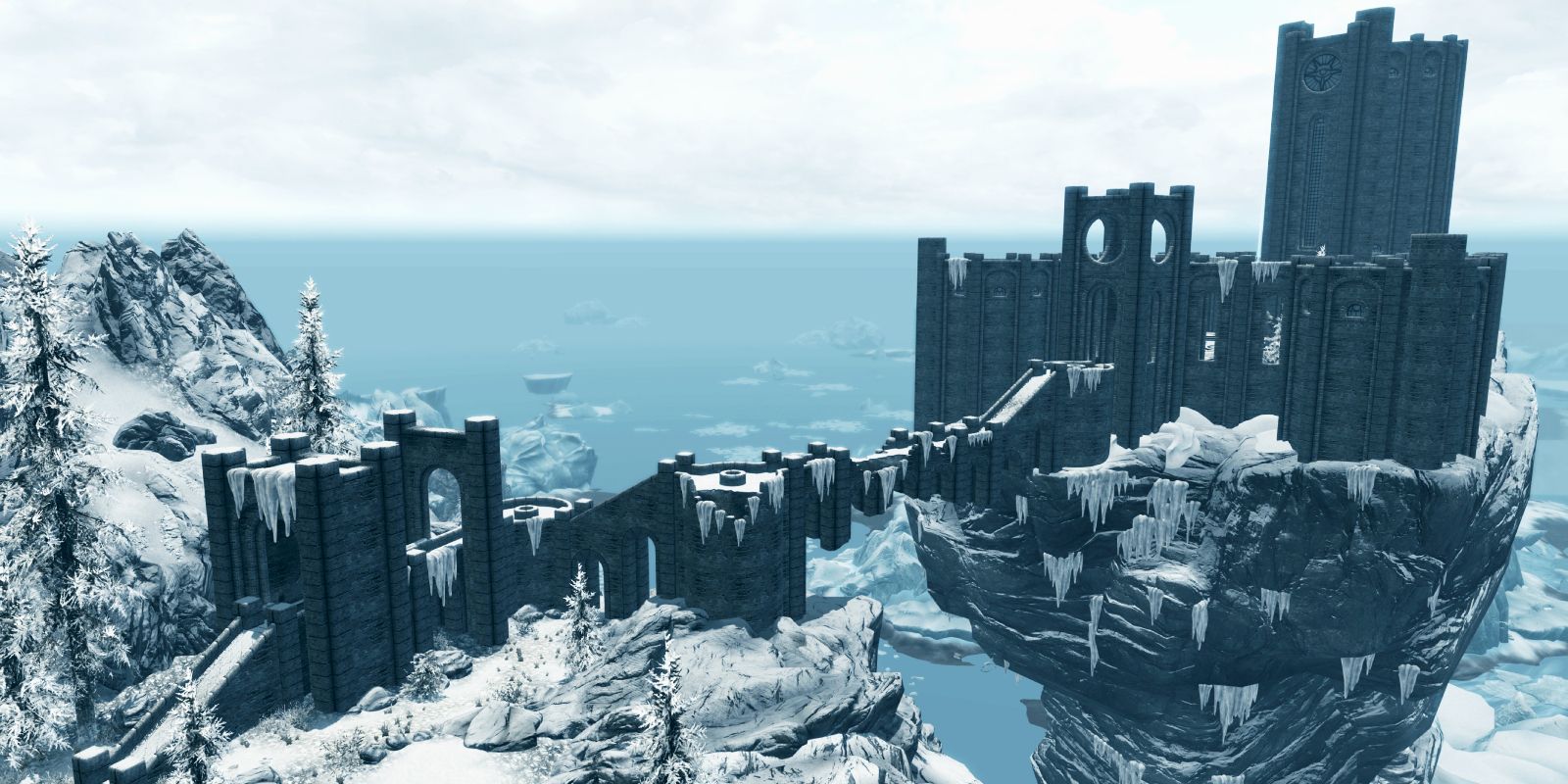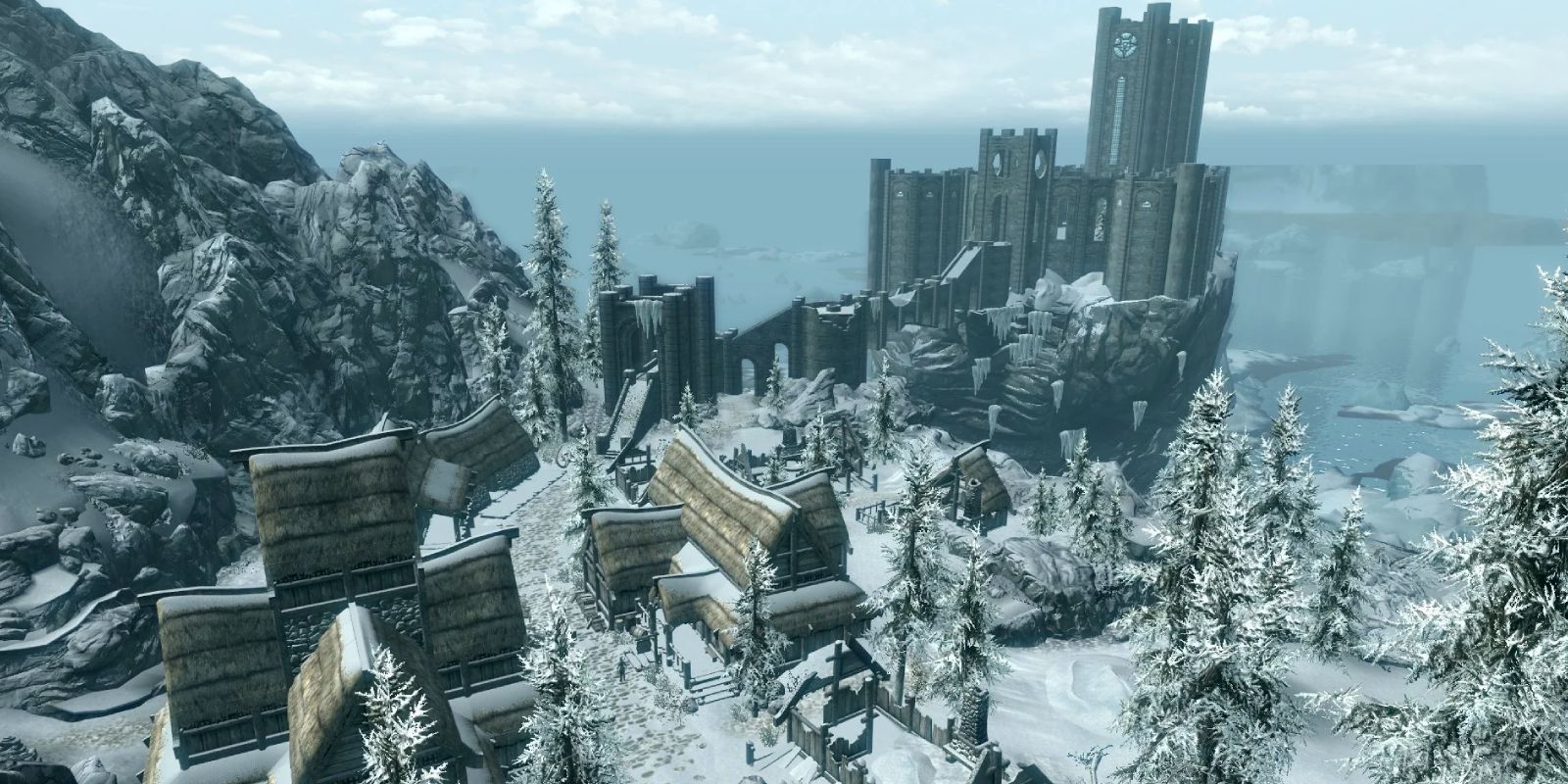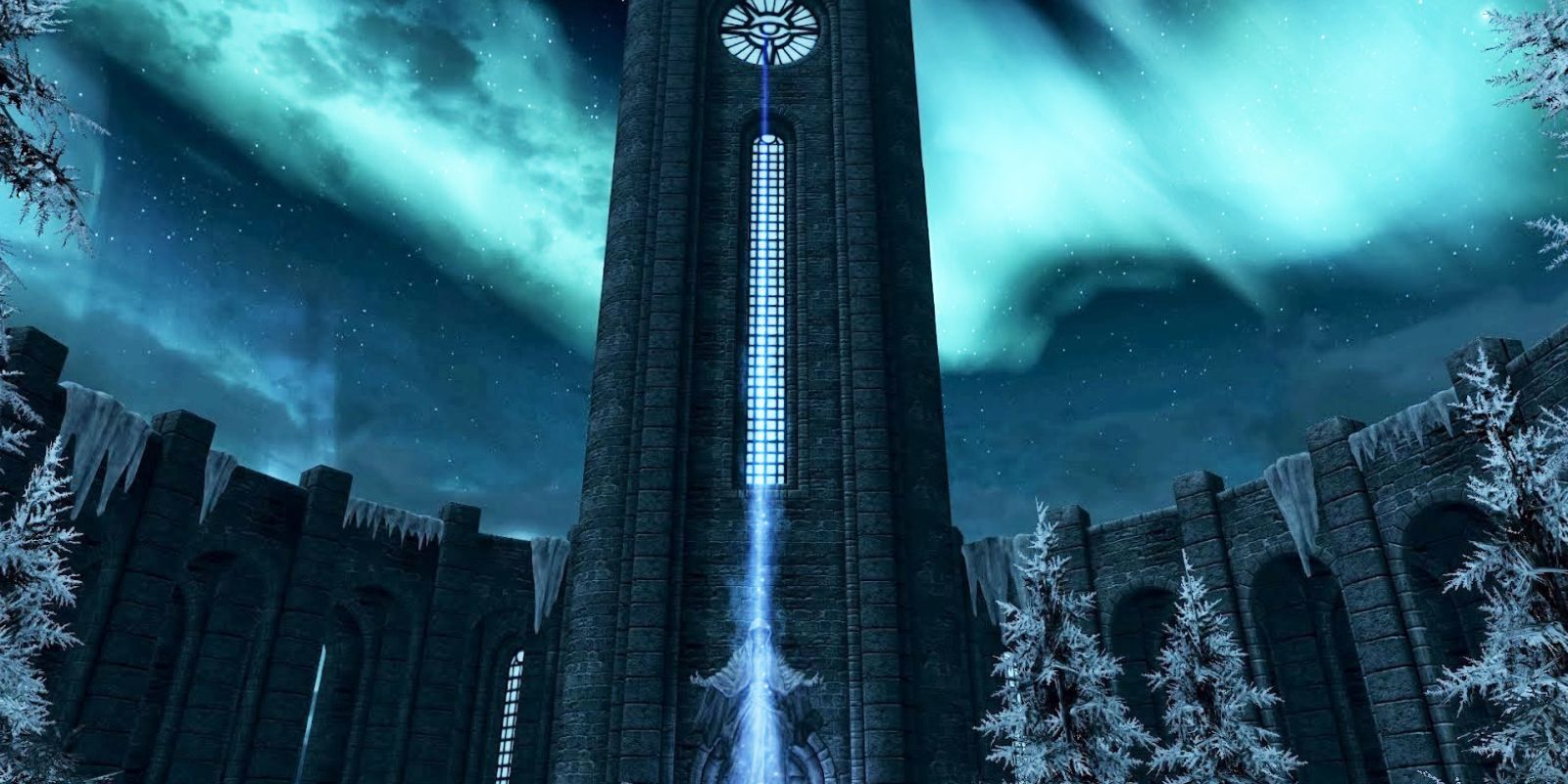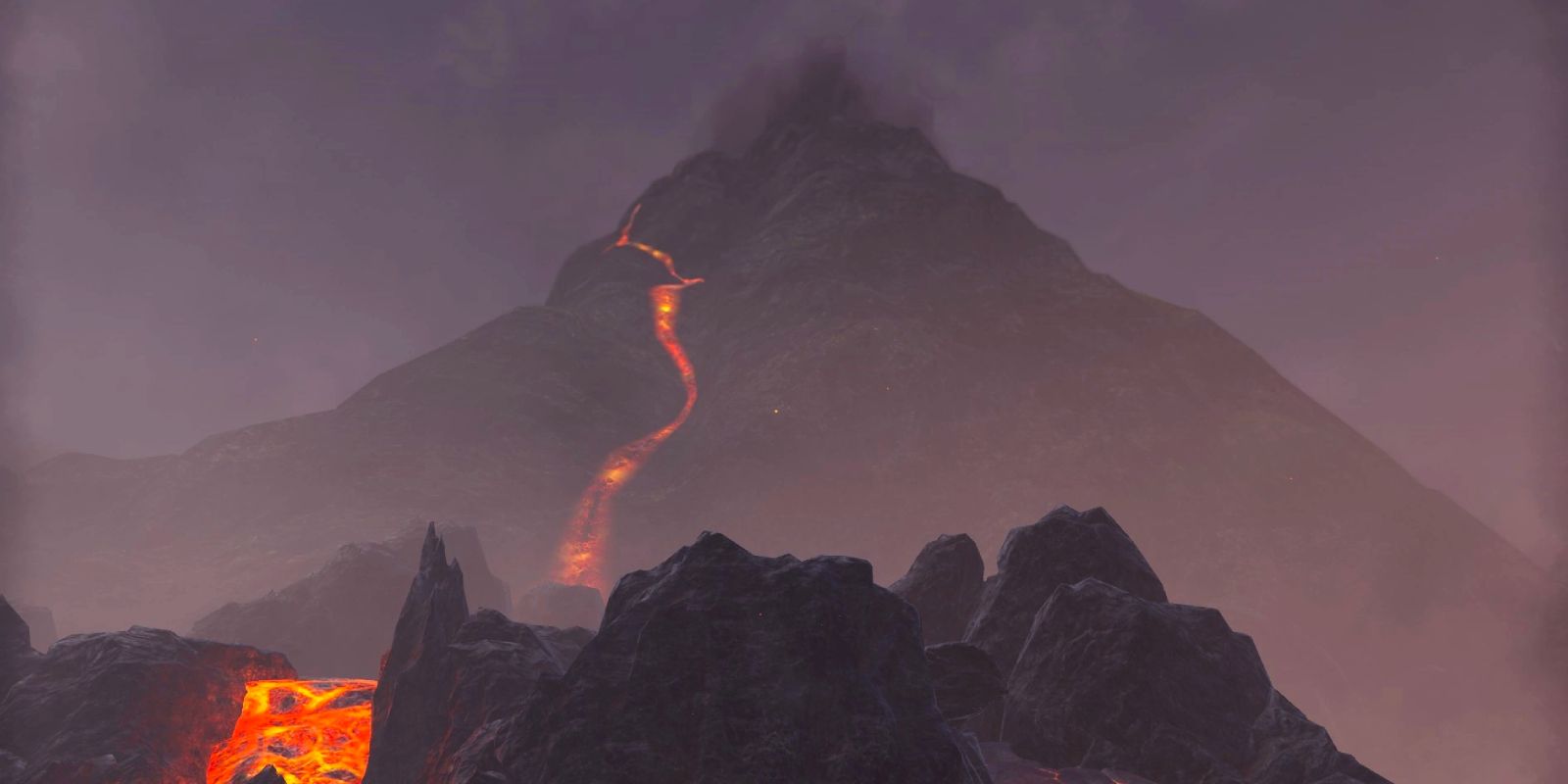Winterhold is one of Skyrim's most mysterious cities, shrouded in distrust toward the College of Winterhold and still recovering from the massive collapse of the region just half a century earlier. Players visiting the city for the first time will be quick to notice the sorry state of much of its architecture, with entire areas having fallen into the Sea of Ghosts and many homes left abandoned. In fact, the mages college is one of the only areas left seemingly untouched, something that has helped further the local residents' distrust of the students there. Though many Nords claim that the college is responsible for Winterhold's collapse, is there actually any evidence to support that theory? What's the actual story behind the fall of the city?
One of nine major cities found dotted across Skyrim's landscape, Winterhold serves as the capital of the hold that goes by the same name, located in the northeast area of the map by the coast. Full of mountains, steep cliffs, icy waters, and near-constant snowstorms, it's relatively isolated from the rest of the region. Though there are plenty of ruins and shipwrecks to explore around Winterhold, the city itself has only a few buildings left to explore, including an inn and the Jarl's longhouse. Aside from that, Winterhold lies mostly in ruins, lacking even walls or other physical defenses to keep visitors out.
Years before the Great Collapse, Winterhold served as the capital of all of Skyrim, though this title was later given to Solitude. The city's origins have always been somewhat shrouded in mystery, aided by rumors of magical interference from suspicious locals. Some sources, found throughout the hundreds of lore books in the Elder Scrolls series, claim that Arch-Mage Shalidor from the Elder Scrolls Online's Mages Guild questline is responsible for building the city singlehandedly, using nothing but a spell to do so. These rumors make it clear that Winterhold has a long and complicated history with magic, the culmination of which seemingly lead to the College of Winterhold's reputation among the Nords.
What Winterhold's History Was Like Before Skyrim
Winterhold's history supposedly goes as far back as 1E 369, when the last monarch of the First Empire of the Nords was killed and the War of Succession sent much of the Nordic Empire into rapid decline. Primarily, however, the city started to see rapid change around the time of the Elder Scrolls Online, which explores Winterhold's presence in the Ebonheart Pact. By 2E 572, Skyrim had been split into two kingdoms, and Winterhold became part of the Eastern Kingdom. It's worth noting that despite the Nords role in the alliance, the city isn't actually explorable in the game proper, though it's possible this could be changed in a later extension.
The city plays another large role in Elder Scrolls history during the time of the third empire, namely throughout the events of Arena and Oblivion. In Arena, players travel to Winterhold in search of a piece of the Staff of Chaos. The piece is located in Labyrinthian, an ancient and notoriously complex nordic ruin with a long magical history that can be explored in Arena, Skyrim, and The Elder Scrolls Online. Despite Winterhold's extensive involvement with magic throughout the different eras, however, tensions between the local Nordic population and the mages were high and began to reach a boiling point during the Oblivion Crisis.
Why Skyrim's Nords Blame The College Of Winterhold For The Great Collapse
The year before the Oblivion Crisis began, Winterhold saw something of a renaissance in terms of power. Dunmer refugees and scholars alike came into the city, founding a new home for the College-maintained Ysmir Collective library and resurrecting the city's mercantile areas and artistic culture. The new population and new ideas brought with them more uncertainty from long-time residents, a feeling that blossomed into outward dislike in the following year when the Daedric Horde attacked Winterhold. Although many mages served as a front line of defense, according to the lore text included on Skyrim's loading screens, they were an easy party to blame for the Mythic Dawn's actions.
In the immediate aftermath of the Oblivion Crisis on Tamriel's timeline, yet another wave of Dunmer refugees came into the city following the Red Year. When many of those refugees returned to Morrowind, namely Solstheim at the beginning of the Fourth Era, Winterhold's residents expected the college mages - a significant portion of which were Dunmer - to follow suit and were torn between outrage and disappointment when they did not leave the city. This increase in tensions can be read about in Arch-Mage Deneth's letter, On the Great Collapse, which can be found in Skyrim. The letter also offers assurances to the Jarl that the College of Winterhold is in fact not responsible for the Great Collapse, though as seen in the time of Skyrim, that did little to stop the blame from being placed on the mages.
Red Mountain: Why Skyrim's Winterhold Collapsed Into The Sea
The actual cause of the collapse was massive surges of waves in the Sea of Ghosts just off the coast of Winterhold, battering the city for close to a year and wiping out entire districts at a time. Skyrim's College of Winterhold, however, was left entirely untouched. Arch-Mage Deneth cited the college's protective magic as the reason for this, though in the eyes of many it was an indication that the mages were responsible for the Great Collapse in the first place. A more likely explanation, however, is that the Sea of Ghosts' turmoil was a direct result of the eruption of Red Mountain, one that wasn't fully realized until years after the event.
Red Mountain erupted in 4E 5, almost a hundred years before the Great Collapse in Winterhold, and yet Skyrim's Arch-Mage Savos Aren makes note that scholars in the Elder Scrolls universe cite it as a likely candidate for the collapse. It was only one of many natural disasters to occur during the Red Year, spanning from major earthquakes and flooding to the destruction of buildings and roads as far as Black Marsh. It isn't entirely unreasonable to assume that other complications could emerge years down the line, especially given the unusual way the world operates in The Elder Scrolls series. Evidence of other long-lasting effects of the Red Year can be seen on Solstheim in Skyrim's Dragonborn DLC, the climate of which was drastically changed by the eruption of Red Mountain.
Of course, there could be other explanations that haven't been explored yet and might be addressed later on in the Elder Scrolls series, included as supplemental Skyrim information or a plot element of The Elder Scrolls 6. For the time being, there's no concrete answer one way or another as to why the Great Collapse occurred or whether the mages are truly responsible for Winterhold's downfall. One certainty, though, is the fact that the event serves as a testament to the rich and oftentimes hidden lore of Tamriel.




